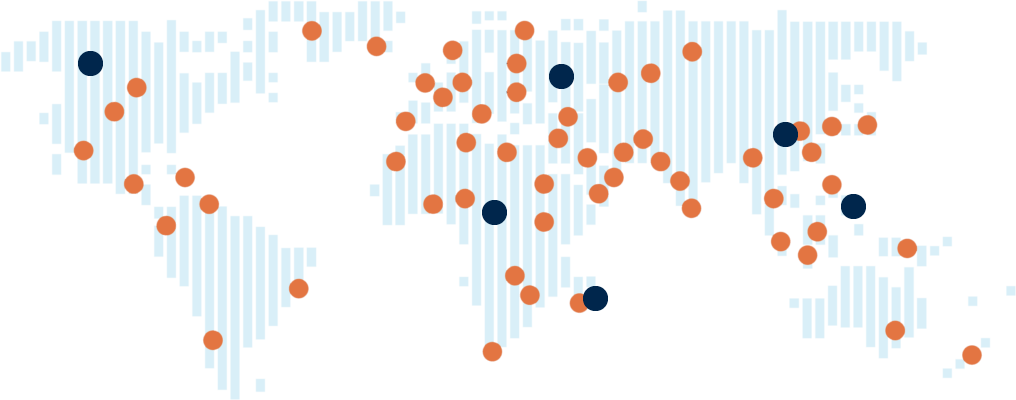LIVING UP TO EXPECTATIONS:
Many have feared the start of a proper US hiking cycle – suggesting it would prompt a huge USD appreciation and aggressive outflows from risk assets.
For now, a strong global backdrop, stable or declining real rates (headline inflation is close to 2%) and a 10-year yield that is anchored to 2.5% are helping a quite different, positive market outcome.
UNITED STATES
S&P 2,378 +0.24%, 10yr Treasury 2.49% -7.40bps, HY Credit Index 322 -11bps, Vix 11.61 -0.38Vol
After determinedly setting the stage over the past month, the FED raised rates as expected – shifting the target rate by 0.25% to between 0.75%-1.00%. This is the 2nd hike in the last 3 months, but only the 3rd since the financial crisis. Despite the tightening, the USD weakened (on a trade-weighted basis the currency is almost 2% lower on the year) and Treasuries rallied as the committee executed a “dovish hike. The accompanying statement was little changed; business fixed investment was upgraded from “has remained soft” to “appears to have firmed somewhat” and the strength in inflation was acknowledged with expectations that it will “stabilize” rather than “rise” to 2%. The decision was not unanimous, Neel Kashkari (Minneapolis FED) preferring to maintain rates at their previous level.
The dot-plot forecast for the path of interest rates was little changed, with the median expectation remaining at 3 hikes for this year and next – there was no acceleration in the cycle. Economic projections were similarly very little changed. In the accompanying press conference, Yellen was balanced:
- “As a matter of prudent planning, we discussed at this meeting a number of issues related to an eventual change to our reinvestment policy. We made no decisions, and we will continue our discussion at subsequent meetings.”
- “We have plenty of time to see what happens” on fiscal policy.
The FOMC has delivered a lesson in how to manage investor expectations. First, FED speakers shifted the market implied probability for March from near 0 to almost 100%. Then, this week’s communication ensured the overall path for rates remained within the current range. We acknowledge that “hard” data is failing to fully keep pace with “soft” (survey and sentiment) data. We also believe financial asset valuations are stretched. Nonetheless, we continue to see the potential for the FED to deliver on their 3 hikes for 2017. This is based on a labour market which (despite President Trump’s consternations) is very close to full employment.
The President proposed his first budget last week (which needs to be approved by congress). This followed the trend set by Obama and Bush to increase military spending, but the scale of potential reallocations was notable. The plan seeks to increase funding to the armed forces by 9%, funded by a 31% cut to the Environmental Protection Agency, 29% cut to the Department of State and a 21% cut to both the departments of Agriculture and Labour. A “one love” budget this was not.
Economic data releases were mostly positive, Michigan consumer sentiment, Philly FED both continuing their strong tone whilst the producer price index rose 2.2% from February 2016, the highest rate of increase in almost five years.

HSCEI 1,058 +4.46%, Nikkei 1,952.00 +1.53%, 10yr JGB 0.08% 0bps, USDJPY 112.700 -1.80%
The People’s Bank of China raised the interest rates used for open market operations and money market instruments for the second time in 2017.
Auction rates for 7, 14 and 28 day reserve repos were increased to 2.45%, 2.60% and 2.75% respectively from 2.35%, 2.50% and 2.65% previously. Rates on the MLF (medium-term lending facility) were also raised from 2.95% and 3.10% to 3.05% and 3.20% for the six and 12 month facilities respectively, the second MLF rate hike of the year following the last round on 24th January.
The accompanying statement commented that the move “mainly reflects recent changes in external and domestic factors influencing market supply and demand” and is “not at all a rate rise” in the standard interpretation of monetary policy.
While some commentators interpreted this as a hawkish signal from the PBOC, which would supposedly inevitably lead to increases in benchmark interest rates, the Chinese H share index finished the week up 4.46% in USD.
We are far less concerned than the bears in our interpretation of the PBOC’s actions year to date. Whilst there will be those that say that the Chinese central bank is preparing to raise benchmark interest rates with its recent moves, or that the Federal Reserve’s expected accelerated tightening cycle is backing the PBOC in to a corner, we take a different approach. The full text of the Chinese government work plan was released this week, following the conclusion of the National People’s Congress. The surprise to the market was the soft tone towards the property sector. With property prices returning to robust acceleration, following a dampening in 2H16 with the implementation of concentrated sector tightening measures, market commentary is beginning to talk of a bubble forming in the Chinese property market. Thus, many were surprised when the government chose not to highlight this risk specifically in this year’s work report.
Regardless of whether this market is or is not approaching bubble territory current market dynamics are somewhat desirable in the eyes of the government.
Given the importance of the property sector in generating economic growth, as a source of demand to use up the excess capacity in secondary industries, and as a source of employment, plus the crucial role that land sales play in generating state government revenue, we believe the increasingly popular description of an “indispensable bubble” is somewhat justified. With its soft tone regarding property prices, the government is avoiding the mistake of cutting off its nose to spite its face. After last month’s change of monetary policy stance from accommodative to neutral from the RBI.
India’s consumer price inflation rate accelerated 50bps in February to 3.70% YoY. However, core CPI, the stickiness of which was specifically highlighted by the Reserve Bank of India as a reason for its transition from a dovish to a neutral stance, eased by 20bps to 4.8% YoY. A sustained fall in core inflation is seen as a necessary condition for the central bank to revert to its accommodative bias.
The central bank of Indonesia held interest rates at 4.75% for the fifth consecutive month, in line with expectations. The central bank currently faces the policy dilemma of an economy performing below potential but with increasing domestic and global inflationary pressures.

MSCI Lat Am 2,607 +2.62%
Brazilian inflation slowed to 4.8% YoY in February, from 5.4% a month prior. Falling inflation paves the way for a 100bps rate cut at the central bank’s next meeting. Brazil’s monetary policy has been flawless since Ilan Goldfajn was appointed chair of the COPOM Board. He was successful in bringing down inflation, maintaining positive real rates and attracting portfolio flows. In our opinion, he is one of the most credible and independent central bankers Brazil had for 15+ years. Industrial Production in Brazil increased 1.4% YoY in February and is starting to show some recovery from -11.7% in the same month last year, and -2.6% in last December. This improvement should keep up in future months as business confidence for manufacturing climbed to 87.9 in February (from 76 one year ago).
After Argentina last week, Moody’s upgraded Brazil’s and Fitch upgraded Colombia’s outlook from negative to neutral. With regards to Brazil, macroeconomic conditions are stabilising; “the economy is showing signs of recovery, inflation falling and the fiscal outlook clearer”. The ratings agencies believe that there are indications that Brazil’s policy framework is improving and the strength of its institutions is recovering, which supports the planned implementation of structural fiscal reforms.
When it comes to Colombia, the upgrade was based on corrections of macroeconomic imbalances following a disciplined policy response to external shocks. The economy has also proven it has the capacity to absorb shocks due to its FX flexibility, the credible track of the inflation-targeting regime and the solid banking system. Specifically, Fitch highlighted the faster than expected reduction of the current account deficit, a lower uncertainty of the fiscal consolidation path following the approval of the tax reform, and the expectations of the continuation of the convergence of inflation towards the central bank target. These upgrades are incremental signs that the whole of Latin America’s economies (excluding Mexico) have bottomed out and are in the middle or the end of the adjustment period. We believe that the worst is now behind us and we are at the dawn of a cyclical and/or structural positive cycle in those countries.
Colombia’s current account continues to adjust faster than expected. The deficit stood at 4.4% of GDP in 2016 coming down from 6.4% a year before. This performance is the result of the depreciation of the currency that led to a 15.6% collapse of imports and boosted imports.
Business confidence in Chile is rising from the ashes, reaching 45.9, its 3rd consecutive advance in a row. This indicator remains in contraction territory, highlighting the exaggerated pessimism from which Chile has suffered and may illustrate expectations of a political change in the presidential election of November 2017. The Chilean central bank cut the benchmark rate by 25 bps to 3%, as expected. The doveish stance hinted that the easing cycle isn’t over, and inflation level expectations also allowing additional room for additional cuts.

MSCI Africa 849 +5.85%
Despite the US$2bn the Central Bank of Nigeria (CBN) has injected into the system in the past weeks, the gap between the official and unofficial FX rates is not closing. The unofficial rate is still around 450 NGN per USD. It seems that the authorities have rejected the idea of a free float of the currency. At this rate, the US$30bn reserves will fall short of demand. In our view, the CBN is providing a short-term solution to a structural problem.
South African manufacturing production expanded 0.8% YoY in January, rebounding from -2% a month before. On the contrary, retail sales were surprisingly down 2% YoY as the consumer’s disposable income continues to be pressured by high interest rates and 11.4% food inflation.
South Africa is also showing signs of bottoming out, as confidence indicators have already rebounded and industrial production isn’t falling anymore. As always, the industrial cycle leads consumption in and out of an economic slowdown. During 2017, it is expected that the market and the ZAR will react more to the political outlook (ANC leadership election in December 2017) and external environment (Fed rates, commodity prices), than to domestic indicators.
In Morocco, King Mohammed VI replaced Prime Minister Abdelilah Benkirane, and will ask another member of the Islamist Justice and Development Party (PJD) to form a government. The PJD, which has 32% of Parliamentary seats, failed to form coalition in the 5 months following Parliamentary elections.
Source: Alquity Global Market Update www.alquity.com




